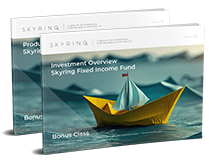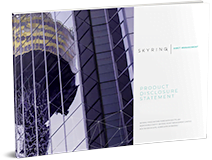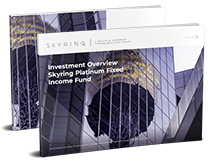
Why smart investors are looking to fixed income in the midst of today’s share market boom
In the second half of 2025, sharemarkets around the world have been rising rapidly. The MSCI All Country World Index (which measures 47 global stock markets) records that just five have produced negative returns this year. And, here in Australia, the S&P/ASX200 has gained more than 12.5% since April.
On the face of it, such widespread growth should be fantastic news for investors – when prices go up across the board, almost everyone’s portfolio is worth more.
However, rapid growth also creates an unexpected challenge for many investors – and that’s portfolio drift.
When share prices rise faster than other assets, a portfolio can quickly become more heavily weighted toward equities, or growth assets. So, a balanced portfolio that started as 70% shares and 30% income assets, can suddenly take on an 80/20 split, changing its entire risk profile.
But to understand why, in 2025, so many astute investors are taking a closer look at their fixed income allocations, you really need to understand why sharemarkets are rising in the first place.
Why sharemarkets around the world have taken off in 2025
We believe global and local sharemarket growth this year comes down to five key factors.
1. Strong corporate earnings growth
2025 has been a good year for many businesses around the world thanks to improved efficiency (largely due to AI) and higher consumer spending. At the same time, many input costs are stable or falling, as supply chains finally normalise after the pandemic.
As a result, in the third quarter of 2025, S&P 500 companies (i.e. the largest 500 companies in the United States) reported an average lift in earnings of 10.7% – their fourth consecutive quarter of double digit growth.
Here in Australia, corporate earnings have been a little more mixed, with some sectors (food, professional services and accommodation) reporting strong growth, while others – like some mining and financial services businesses – experienced small declines.
2. An AI investment boom
Few developments have captured the attention of investors in recent years like the potential of artificial intelligence (AI). All five of the world’s largest companies – Nvidia, Apple, Microsoft, Amazon and Alphabet (Google) – are heavily invested in developing AI. As their share prices rise, this pulls global indexes higher.
3. Interest rate cuts
Australia saw several interest rate cuts over 2025, as the Reserve Bank took the official cash rate from 4.35% to 3.60%. Other central banks around the world – including in the United States, Europe, the United Kingdom and China – have also cut interest rates in 2025.
Although the relationship between interest rates and share markets isn’t always automatic, rate cuts can benefit share prices in several ways:
- Companies experience reduced borrowing costs and improved profitability
- Consumers have more disposable income to spend (which benefits businesses), and
- Income-focused investors often shift from cash deposits to dividend-paying shares.
4. Income growth and economic resilience
Over the past few years, several factors have caused a general fear of local recession – from soaring cost of living pressures (Australia’s inflation rate peaked at 7.3% in September 2022) to blocked supply chains and from stagnant wage growth through to the alleged mortgage cliff.
Fortunately, many of these have alleviated without damaging the national economy too badly. And, over the last year or so, there have been several signs Australia’s economy may be through the worst of these headwinds.
For investors, this resilience has translated into something simple: companies keep making money because people still have money to spend on the goods and services they’re producing.
5. General market optimism
Finally, and perhaps most important of all, stocks are rising simply because people think they will rise.
When investors are confident that shares will be worth more tomorrow than today, they’re also often willing to pay more for them. This creates a self-perpetuating cycle, where prices climb, optimism builds and new buyers step in – reinforcing the upswing.
In fact, it’s this final factor – market psychology – that is often the single most powerful driver of stock market movements. And once confidence takes hold, it can push share markets faster than their underlying fundamentals.
Is this what’s happening right now?
Many share market commentators believe this final phenomenon is what’s driving the market more than anything right now – because, while earnings may have generally lifted this year, share prices have risen far more.
By September 2025, the price-to-earnings ratio of Australian stocks (calculated by dividing a company’s share price by its earnings per share) was sitting at over 22-times, compared to a long-term average of less than 16 times.
That’s exactly where fixed income can come in…
How fixed income behaves in rising markets
Fixed income operates in a fundamentally different way from shares. Rather than owning part of a company, investors effectively lend money to governments, banks or corporations in the form of bonds. In return for this, they receive regular interest payments for a set period, as well as the repayment of the amount they loaned at the end of the term (known as maturity).
While fixed income doesn’t produce the dramatic gains that equities can deliver during a strong market, it does provide something the sharemarket can’t: stability and predictability. And that’s just as important for many – if not most – investors.
So too, is the fact that fixed income has different drivers from shares. Its performance isn’t tied so much to investors believing prices will go up, but by interest rates, inflation and credit conditions.
This can help de-risk a portfolio because, in periods when share prices run well ahead of fundamentals – as they have through 2025 – fixed income offers a steady return tied to different factors altogether. (Economists describe this as there being a low correlation between fixed income and shares.)
Then, when a rally eventually cools or corrects – as history shows they always eventually do – income assets typically cushion portfolios and soften the impact of sharemarket falls.
Another reason many investors balance their portfolio with fixed income is that it also doesn’t tend to have the same dramatic price swings as share prices. Fixed income’s price is ultimately “anchored” by the fact that the issuer has promised to repay the loan once the bond expires.
This means fixed interest eventually returns to its face value at maturity (i.e. if a government borrows $10million, that’s still worth $10 million when they pay it back). This is something known as the “pull to par” effect.
How investors can think about balancing growth and income
Markets move in cycles that often tend to look the same – expansion, peak, slowdown and then eventually recovery – and different assets tend to lead a portfolio at different stages of this. Shares usually drive returns during expansion phases, while fixed income often provides resilience when conditions cool.
Share market strength creates a natural drift toward equities: not through any investment decision, but simply because shares tend to grow faster than other assets in a boom. For many investors, this means their portfolios now carry more sharemarket risk than they wanted to carry.
Conversely, a declining share market can weigh a portfolio too heavily in favour of fixed income and other defensive assets.
Understanding these patterns is the first step in creating an investment portfolio where balance matches ambition. The second is recognising that maintaining balance isn’t about predicting what happens next, it’s about ensuring your portfolio is set up to handle whatever comes next.
What this means for your portfolio
This is why many sophisticated investors periodically review their portfolios to “understand”.
- Whether the original mix of growth and income assets still stands or whether market movements have shifted it.
- What role each asset plays within their broader portfolio and strategy.
- How different assets behave through cycles, with equities leading during expansion phases and fixed income typically smoothing the ride for when conditions cool.
- The portfolio’s overall shape and not just the short-term performance of any single investment.
Analysing these factors doesn’t necessarily mean making decisions about buying or selling. It’s simply a way of understanding how a portfolio has evolved as markets move, and how a blend of income is necessary to create a stable foundation over time – even in a growth market.
After all, fixed income will never deliver the headlines that equity rallies generate. But, when share prices rise rapidly – even outpacing the fundamentals that underpin them – stability might be the most valuable thing a portfolio can hold.
Important Information:
This blog post is for general information only and does not consider your personal circumstances, financial needs, or objectives. You should read the Product Disclosure Statement carefully before investing. Past performance is not a reliable indicator of future results. Investments carry risks including possible loss of capital. No guarantee is made regarding the repayment of capital or the payment of income.
As with all investments, returns are subject to market conditions and the performance of the underlying assets.
This rate of return is subject to the performance of our related entity, Skyring Capital Pty Ltd and/or Skyring Securities Pty Ltd.
You should consider whether the investments are suitable for you or seek personal advice from a licensed financial planner before making an investment decision.
To invest in this Offer, investors should obtain and read the PDS and TMD before making an investment decision.
TMD and PDS for this product are available from our website or request a copy by contacting us on 1300 73 72 74 or request one from your Financial Advisor. Investments may only be made by completing the application form attached to the Product Disclosure Statement or via our online application service.
Skyring Asset Management Limited ACN 156 533 041 holds Australian Financial Services License (AFSL) 422902. Skyring has registered the Skyring Fixed Income Fund ARSN 622 775 464 with the Australian Securities and Investments Commission (ASIC). Skyring Asset Management Limited ACN 156 533 041 AFSL 422902 is the issuer and manager of the Skyring Fixed Income Fund ARSN 622 775 464. Skyring has registered the Skyring Platinum Fixed Income Fund ARSN 646 317 982 with the Australian Securities and Investments Commission (ASIC). Skyring Asset Management Limited ACN 156 533 041 AFSL 422902 is the issuer and manager of the Skyring Platinum Fixed Income Fund ARSN 646 317 982.
Withdrawal rights are subject to liquidity and may be delayed or suspended. See PDS for more information.
Skyring’s address is Level 2, 2 Gardner Close, Milton, QLD, 4064. Our reply-paid postal address is Reply Paid 88076, Kenmore, QLD 4069. You can contact us by telephone on 1300 73 72 74 or via email at investor@skyring.com.au.





